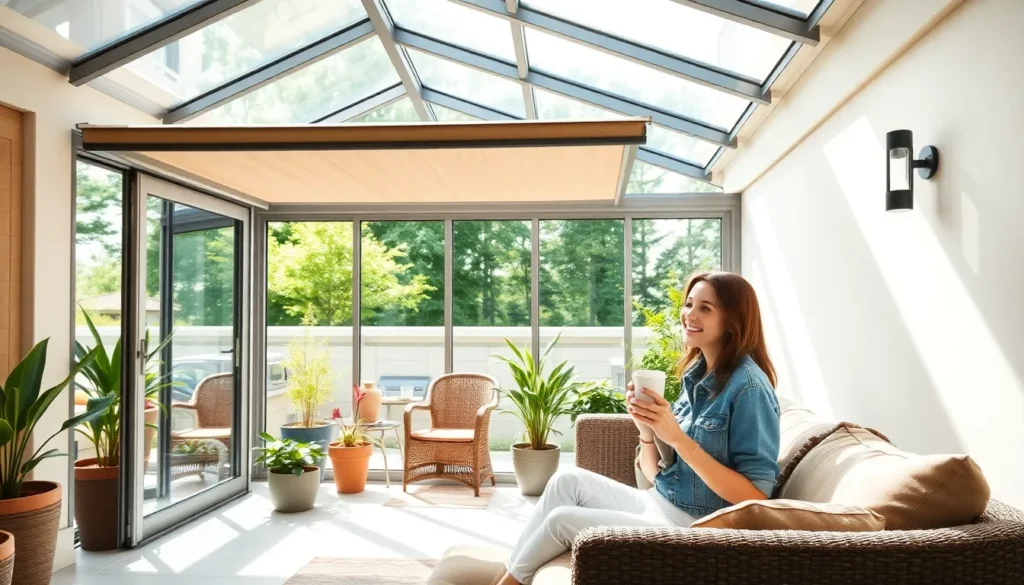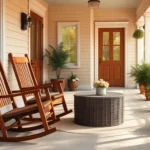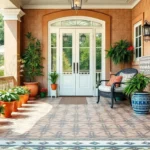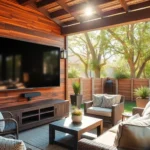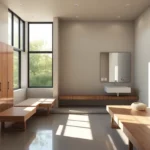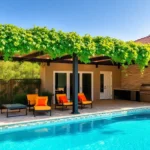We’ve all been there – staring at our open patio and dreaming of transforming it into a private sanctuary that’s protected from the elements year-round. Enclosing your patio isn’t just about creating extra living space; it’s about unlocking your home’s hidden potential and dramatically increasing both comfort and property value.
Whether you’re dealing with harsh weather conditions, nosy neighbors, or simply want to extend your indoor living area, patio enclosure ideas offer endless possibilities. From budget-friendly DIY answers to sophisticated glass installations, we’ll explore creative approaches that suit every style and budget.
Ready to turn your underutilized outdoor space into your favorite room? We’re diving into the most innovative and practical patio enclosure concepts that’ll inspire your next home improvement project and help you create the perfect blend of indoor comfort with outdoor charm.
Glass Enclosure Solutions for Maximum Natural Light
Glass enclosures create stunning patio transformations that flood your space with sunlight while providing year-round protection. We’ve compiled the most effective glass answers that maximize natural illumination for your enclosed patio.
Tempered Glass Panels
Tempered glass panels offer superior strength and safety for permanent patio enclosures. These panels withstand extreme weather conditions and provide crystal-clear views of your outdoor surroundings. Installation typically requires professional mounting systems that ensure structural integrity and proper sealing.
Fixed glass panels work exceptionally well for three-season rooms where ventilation isn’t the primary concern. We recommend 6mm to 10mm thickness for optimal durability and insulation properties. Many homeowners choose floor-to-ceiling installations that create seamless connections between indoor and outdoor spaces.
Sliding Glass Doors
Sliding glass doors combine functionality with maximum light transmission for flexible patio access. These systems allow you to open large sections of your enclosure during pleasant weather while maintaining protection when needed. Modern sliding mechanisms operate smoothly and lock securely for enhanced home security.
Multi-panel sliding configurations can span entire wall sections of your patio enclosure. We suggest low-E coated glass options that reduce heat transfer while preserving natural light quality. Track systems require minimal maintenance and provide decades of reliable operation when properly installed.
Glass Roof Options
Glass roof systems transform patios into bright conservatory-style spaces that capture overhead sunlight throughout the day. Structural glazing creates unobstructed views of the sky while protecting against rain and snow. These installations require engineered support systems that handle snow loads and wind pressures.
Insulated glass units help regulate temperature fluctuations in glass-roofed enclosures. We recommend incorporating ventilation systems or operable skylights to prevent overheating during summer months. Laminated glass options provide additional safety features and sound reduction for areas near busy streets or airports.
Privacy Screen Installations for Intimate Outdoor Spaces
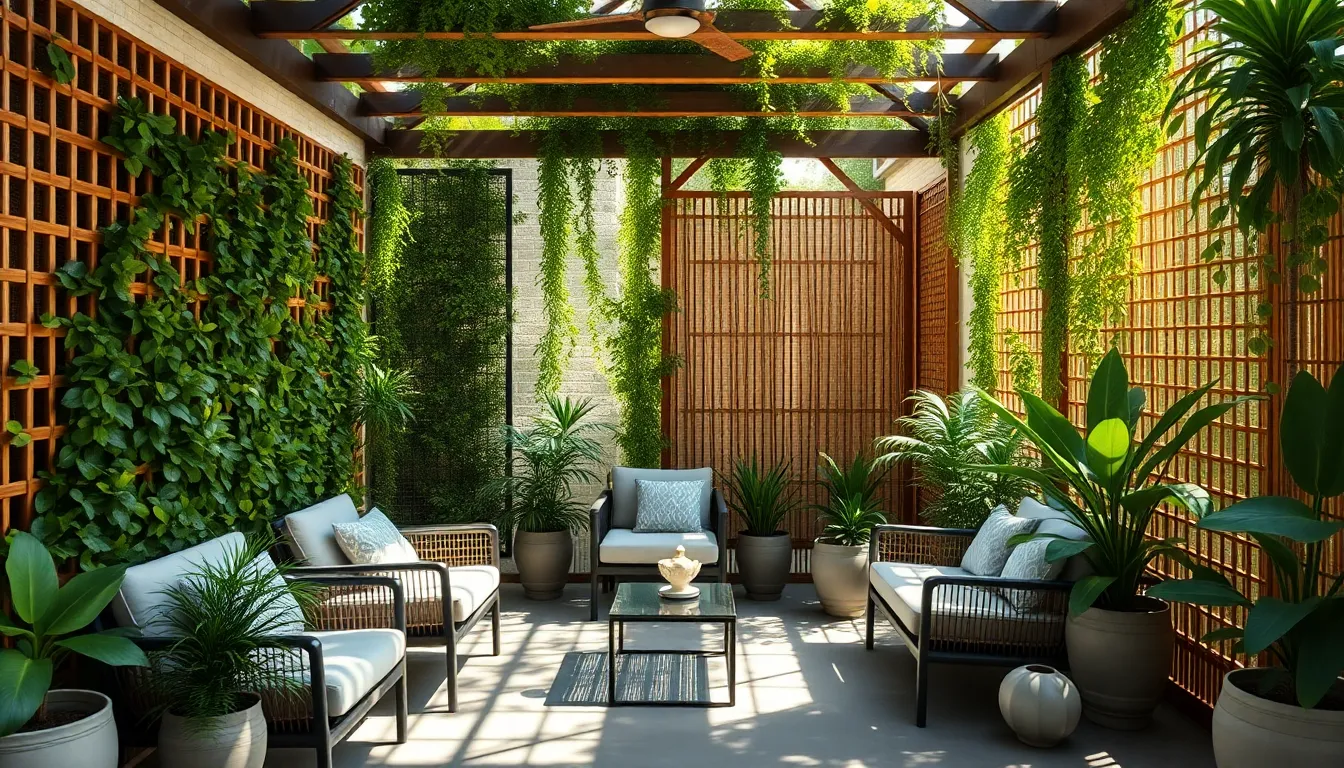
Moving beyond transparent glass answers, we can create secluded patio environments using strategic privacy screen installations. These versatile barriers transform open spaces into intimate outdoor retreats while adding distinctive design elements.
Bamboo Screening Systems
Bamboo screening systems deliver sustainable privacy answers using eco-friendly Anji mountain Tonkin bamboo materials. These rollable panels resist pests naturally and maintain durability across various weather conditions. Installation becomes straightforward with simple wiring or zip tie attachments to existing fences and frames.
Sizing flexibility allows us to cut bamboo screens to fit any patio dimensions while maintaining their structural integrity. Height options range from 3 to 8 feet, accommodating different privacy needs and architectural styles. Weather resistance ensures these organic screens withstand outdoor elements without frequent replacement or intensive maintenance requirements.
Lattice Panel Designs
Lattice panel designs provide partial privacy while preserving natural airflow and filtered sunlight throughout patio spaces. Wood, vinyl, and metal construction options offer different aesthetic appeals and maintenance requirements for various outdoor settings. Strategic placement creates decorative barriers that enhance rather than isolate patio environments.
Climbing plants transform lattice panels into living privacy screens when vines and flowers grow through the crisscross patterns. Standalone installations work independently, while fence topper applications extend existing barrier heights effectively. Trellis functionality combines privacy benefits with vertical gardening opportunities for maximum space utilization.
Living Green Walls
Living green walls maximize privacy potential through vertical planter installations filled with lush vegetation and flowering plants. These modular panel systems attach directly to patio walls or standalone structures, creating natural barriers that improve air quality simultaneously. Custom installations accommodate exact space requirements while providing vibrant backdrops for outdoor entertainment areas.
Pallet systems offer budget-friendly alternatives for DIY enthusiasts who prefer hands-on installation approaches. Color variety emerges through strategic plant selection, allowing seasonal changes and personal design preferences to shape the living wall appearance. Maintenance requirements vary by plant selection, though most systems need regular watering and occasional pruning for optimal growth patterns.
Pergola and Gazebo Structures for Partial Coverage
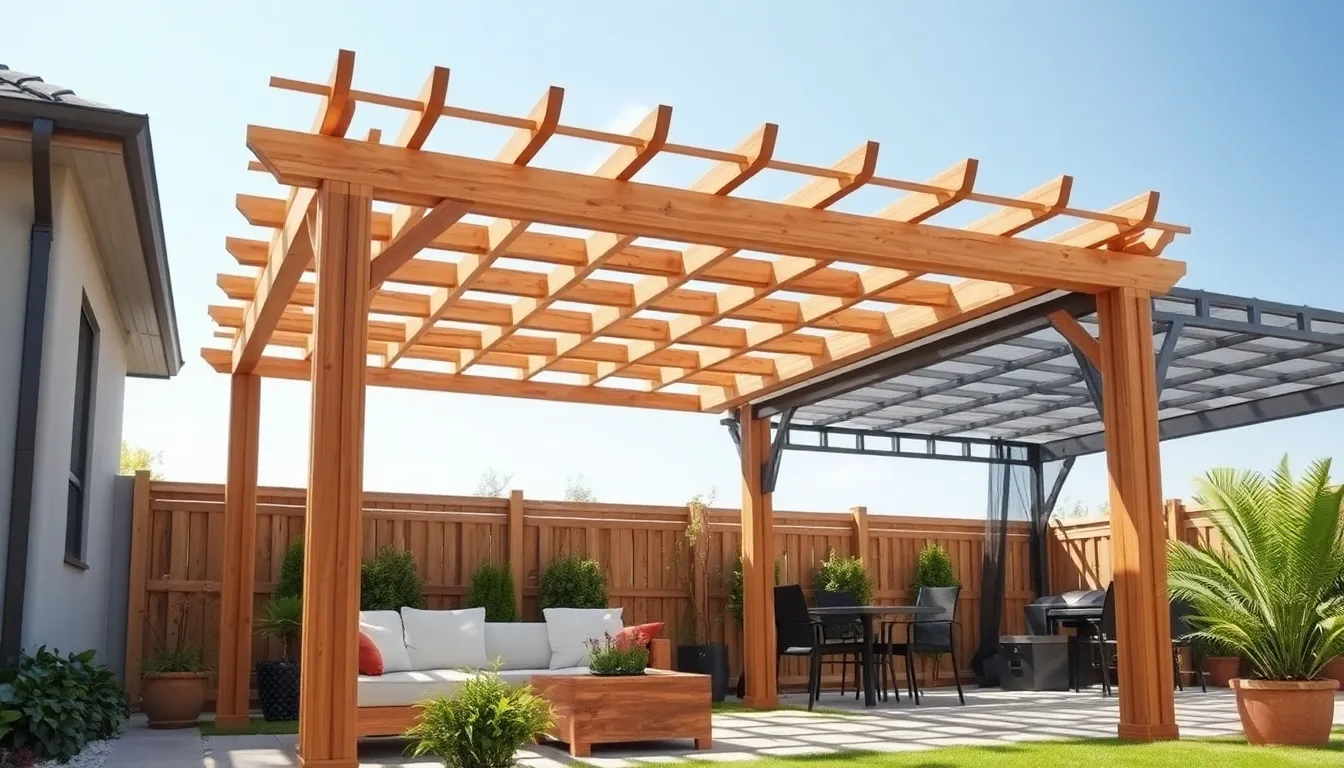
Pergola and gazebo installations bridge the gap between full enclosure and open patio spaces, offering customizable shade answers that enhance outdoor comfort. These structures create defined outdoor rooms while maintaining the airy feel that makes patios so appealing.
Traditional Wooden Pergolas
Wooden pergolas bring timeless elegance to patio spaces while providing essential partial shade coverage. Cedar and redwood materials stand out as premium choices due to their natural weather resistance and rich aesthetic appeal. We recommend cedar pergolas for their durability and ability to withstand various climate conditions without extensive maintenance.
Installation flexibility makes wooden pergolas particularly attractive for homeowners seeking customizable shade answers. Pergola covers and shade kits can enhance these structures, transforming them from decorative elements into functional outdoor shelters. These additions allow you to control sunlight exposure while maintaining the rustic charm that wooden pergolas provide.
Maintenance requirements for wooden pergolas remain minimal when constructed from quality materials like cedar or redwood. Regular staining or sealing every 2-3 years helps preserve the wood’s natural beauty and extends the structure’s lifespan significantly.
Modern Metal Gazebos
Metal gazebos deliver comprehensive coverage that surpasses traditional pergolas in weather protection capabilities. Hardtop designs provide permanent shelter answers, while pop-up variants offer portable convenience for seasonal use. We’ve found that metal construction ensures longevity and reduces maintenance demands compared to wooden alternatives.
Design versatility allows metal gazebos to complement contemporary patio aesthetics seamlessly. Aluminum and steel frameworks support various roofing materials, from solid panels that block rain to mesh screens that filter sunlight. These structures create defined outdoor spaces that feel like extensions of your home’s interior.
Portability features in pop-up metal gazebos make them ideal for renters or homeowners who prefer flexible outdoor answers. Quick assembly systems allow you to establish covered patio areas for special events or seasonal entertaining without permanent installation commitments.
Retractable Canopy Systems
Retractable canopy systems maximize patio flexibility by allowing instant transitions between covered and open-air environments. These advanced answers provide on-demand shade control, letting you adapt your outdoor space to changing weather conditions throughout the day. We appreciate how these systems preserve the option for full sun exposure while offering immediate shelter when needed.
Motorized operation enhances the convenience of retractable canopy systems, enabling effortless adjustments with remote controls or smartphone apps. Manual options remain available for budget-conscious homeowners who prefer hands-on control over their patio coverage. Both systems deliver the essential benefit of customizable sunlight management.
Weather resistance features ensure retractable canopies withstand wind and rain when properly installed and maintained. Quality fabrics resist fading and water damage, while sturdy track systems support smooth operation over many years of use.
Outdoor Curtain and Fabric Solutions
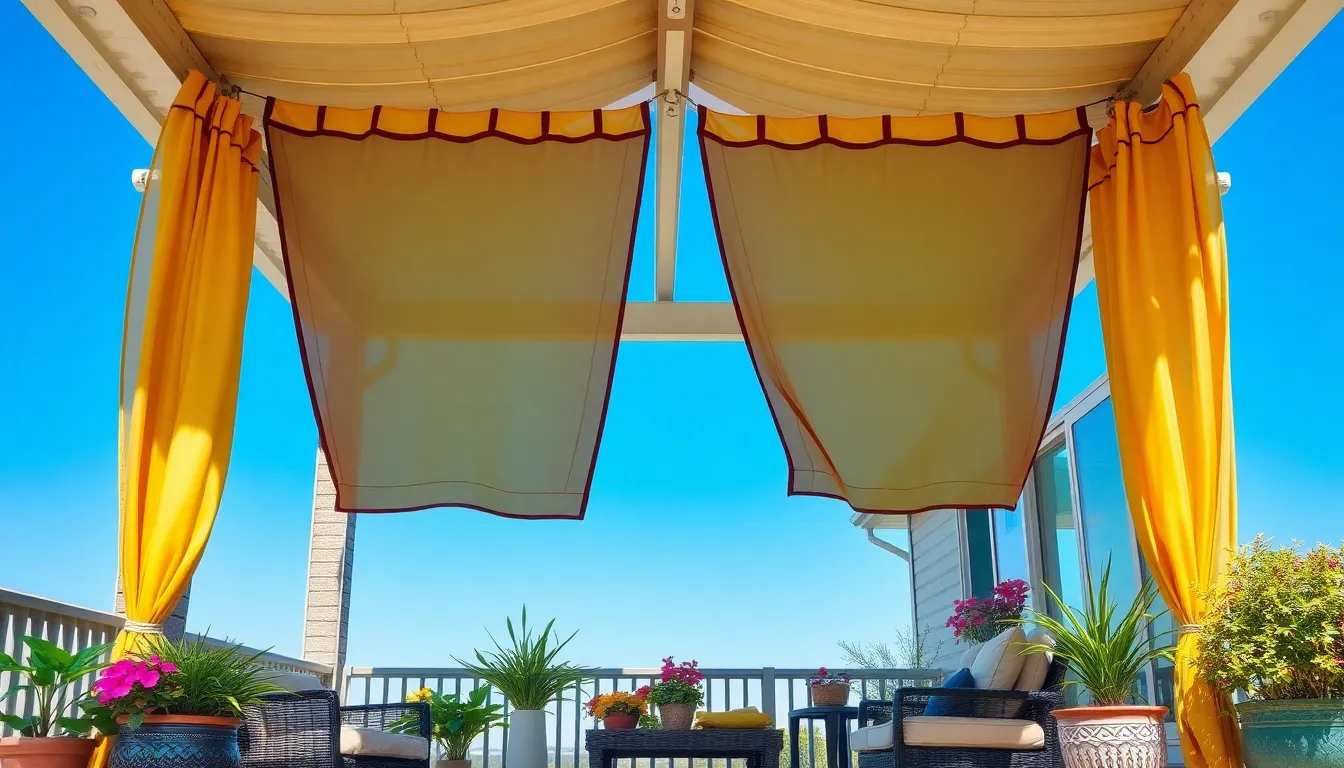
Transitioning from permanent structures to flexible enclosure options, we’ll explore fabric based answers that offer instant protection and privacy. These versatile systems allow us to adapt our patio coverage based on weather conditions and personal preferences.
Weather-Resistant Curtain Panels
Weather-resistant outdoor curtain panels provide versatile protection for patios while maintaining design flexibility. These durable fabric or vinyl panels withstand outdoor elements including wind, rain, and UV exposure without fading or deteriorating. Installation requires mounting on existing covered patios where they can be rolled up or down depending on weather conditions.
Positioning control allows us to tie off curtains at any height for optimal ventilation and airflow management. Rolling mechanisms enable complete concealment when curtains aren’t needed, preserving unobstructed views during pleasant weather. Privacy enhancement comes naturally as these panels create intimate outdoor spaces while blocking unwanted visibility from neighbors or passersby.
Maintenance involves simple cleaning with mild soap and water, while storage requires minimal space when curtains are rolled up. Materials typically include solution-dyed acrylic fabrics that resist mildew and provide excellent color retention throughout seasons.
Drop-Down Shade Systems
Drop-down shade systems offer convenient sun and insect protection through simple mounting and operation mechanisms. These systems integrate with existing patio frames and can be pulled or rolled down as needed for immediate coverage. Aluminum frames provide durability and sleek aesthetics while supporting various screen materials including mesh and tempered glass options.
Operation methods include pull cord systems that allow independent control of each panel for customized coverage. Ventilation remains possible through mesh screen options that block insects while maintaining airflow throughout the enclosed space. Temperature regulation becomes achievable as these systems convert screened porches into comfortable three-season rooms within minutes.
Storage convenience ensures panels can be completely retracted when not in use, maintaining open sight lines and full patio access. Commercial applications demonstrate the versatility of these systems for restaurants, cafes, and business patios requiring weather protection.
Mosquito Netting Options
Mosquito netting provides essential insect protection for patios in bug-prone areas while maintaining airflow and visibility. Durable mesh materials resist wear and tear from weather exposure and regular use, ensuring long-term effectiveness. Installation options include aluminum frame mounting or removable curtain style systems that adapt to different patio configurations.
Privacy benefits extend beyond insect control as high-quality mesh screens create visual barriers while allowing air circulation. Mesh density varies to accommodate different needs, with tighter weaves providing maximum insect protection and looser options prioritizing airflow. Removal and storage capabilities make seasonal installation practical for areas with varying insect activity throughout the year.
Maintenance requires occasional cleaning to remove debris and ensure optimal visibility through the mesh material. Integration with existing patio structures allows retrofitting of screened enclosures without major construction modifications.
Fence and Wall Combinations for Complete Enclosure
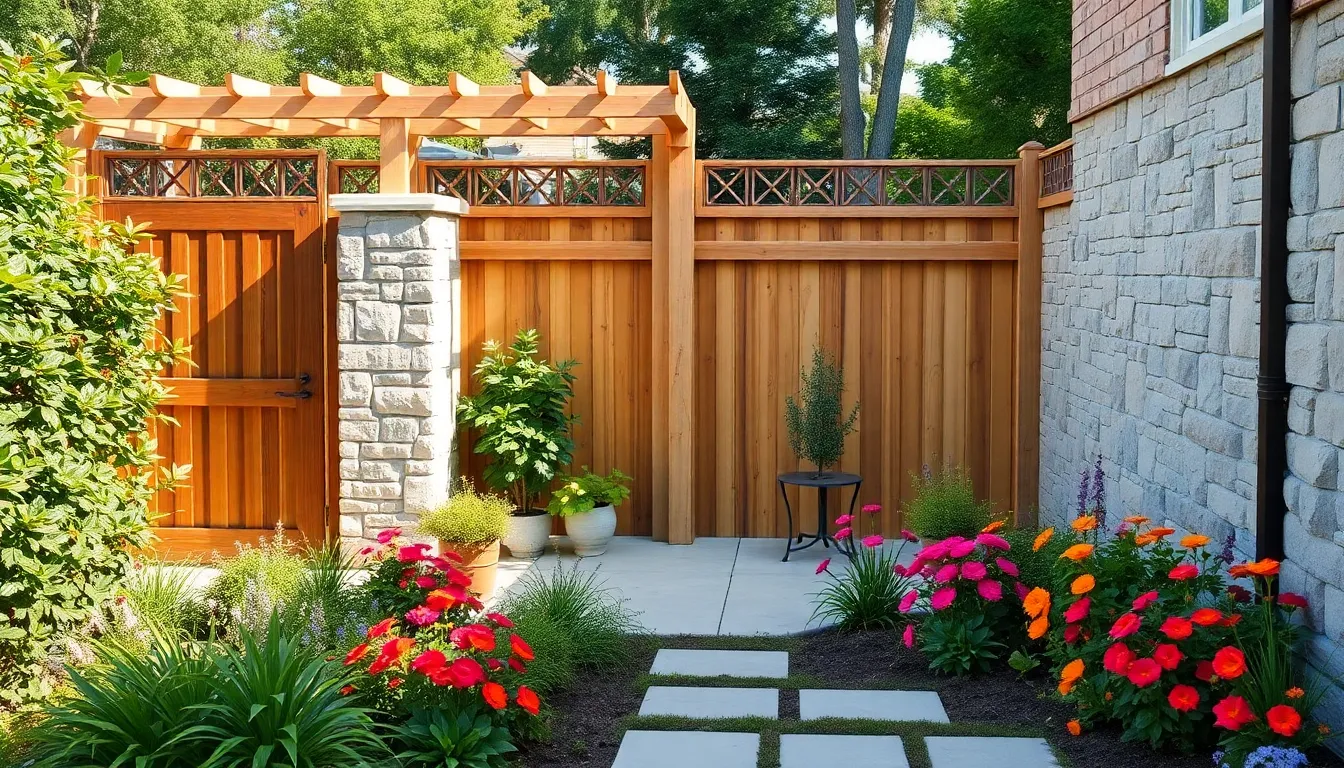
Creating a complete patio enclosure requires strategic combinations of fencing and wall materials that deliver both functionality and visual appeal. We’ll explore the most effective options for achieving total privacy and protection around your outdoor space.
Wooden Fence Installations
Installing wooden fences provides our most cost-effective solution for complete patio enclosures. Shadowbox wood fence designs alternate pickets on either side of the rails, creating privacy while maintaining airflow and angled visibility through the structure.
Building these fences with individual pickets rather than preassembled panels allows the installation to follow your yard’s natural contours more precisely. Proper spacing of 3.5 inches between pickets maintains the perfect balance between privacy and ventilation throughout your enclosed patio area.
Wood fence panels bring warmth and classic aesthetics to any patio enclosure, though they require regular maintenance to preserve their appearance and structural integrity. Customization options include adjusting height, spacing, and finish to match your exact privacy, decorative, or containment requirements.
Stone and Brick Walls
Stone and brick walls represent our most durable and permanent solution for complete patio enclosures. These materials provide maximum privacy while offering superior weather resistance that complements various architectural styles throughout different seasons.
Investment in stone or brick construction requires skilled labor and higher upfront costs, but the results deliver classic elegance and structural strength that surpasses traditional fencing options. Permanent installation creates a sophisticated barrier that adds important value to your property while requiring minimal ongoing maintenance.
Weather resistance of these materials ensures your patio enclosure withstands harsh conditions while maintaining its aesthetic appeal for decades. Various stone and brick options allow customization to match your home’s existing architecture and design preferences.
Composite Fencing Materials
Composite fencing materials blend the natural appearance of wood with synthetic durability for our most maintenance-friendly enclosure option. These panels resist rot, warping, and insect damage while eliminating the need for regular staining or sealing treatments.
Integration with metal framing systems, such as U-channel fence designs, creates a robust structure that holds composite panels securely without sagging or leaning over time. Metal posts with U-channel frames accommodate various infill materials and resist the common problems associated with traditional wooden fence installations.
Upfront costs for composite materials exceed those of natural wood, but long-term savings through reduced maintenance requirements make them economically advantageous. Customization options include different colors, textures, and panel sizes to fit small patios, large yards, or pool areas while maintaining consistent aesthetic appeal.
Retractable Roof Systems for Flexible Weather Protection
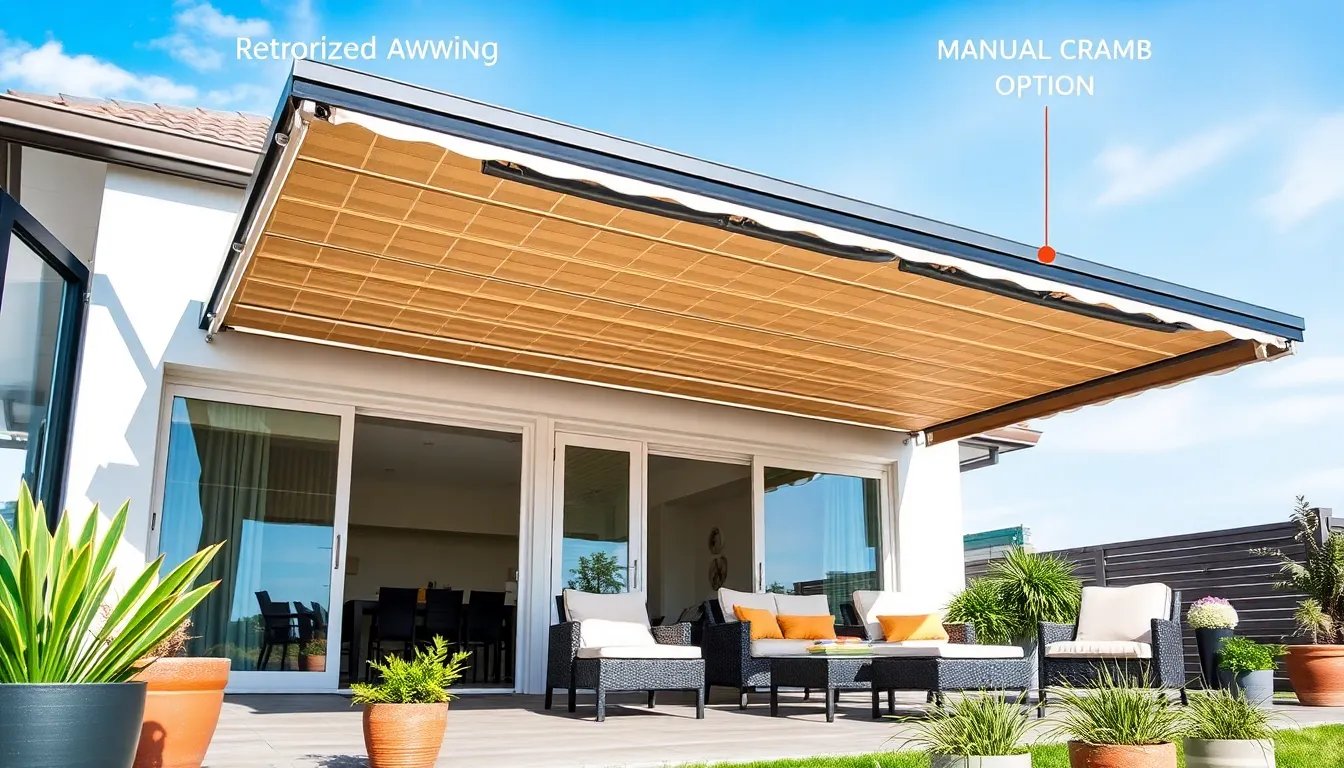
Building on the foundation of fixed enclosures, we’ll explore ever-changing answers that adapt to changing weather conditions. Retractable roof systems offer the ultimate flexibility for patio coverage, transforming your outdoor space from an open-air oasis to a fully protected sanctuary at your command.
Motorized Awning Systems
Motorized awnings deliver effortless patio control with the simple push of a button. These automated systems extend or retract seamlessly, providing instant shelter from sun, rain, and wind without any physical effort on your part. We recommend these systems particularly for larger patios where manual operation would be cumbersome or for installations mounted at challenging heights.
Weather-resistant fabrics paired with sturdy aluminum frames ensure these motorized answers withstand prolonged exposure to outdoor elements. Built-in waterproofing technology keeps your patio dry during unexpected downpours, while integrated drainage systems prevent water accumulation that could damage the mechanism. The automated operation means you’ll never have to worry about manually adjusting coverage when weather conditions change suddenly.
Manual Crank Operations
Manual crank systems provide reliable patio coverage at a more accessible price point than motorized alternatives. These mechanical answers require physical effort to operate but offer exceptional durability and simplified maintenance requirements. We find them particularly suitable for smaller patios where the coverage area doesn’t demand extensive physical exertion.
Basic mechanical components make these systems less prone to electronic failures that can affect motorized versions. Installation flexibility increases with manual operations since you won’t need electrical connections or power sources near your patio area. Cost effectiveness makes manual crank systems an attractive option for homeowners seeking retractable coverage without the premium price of automated features.
Smart Home Integration Options
Smart technology transforms modern retractable roof systems into intelligent patio management answers. Mobile app control allows you to adjust your patio coverage remotely, whether you’re inside your home or away from the property entirely. Voice command compatibility with popular smart home assistants enables hands-free operation when your hands are full with outdoor activities or entertaining.
Weather sensor integration takes automation to the next level by automatically closing covers when rain or high winds are detected. These smart sensors can also open the system during sunny conditions to maximize natural light and outdoor enjoyment. Energy efficiency improves as the system optimizes coverage based on sun position and temperature readings, reducing cooling costs while maintaining comfort levels throughout the day.
Budget-Friendly DIY Patio Enclosure Projects
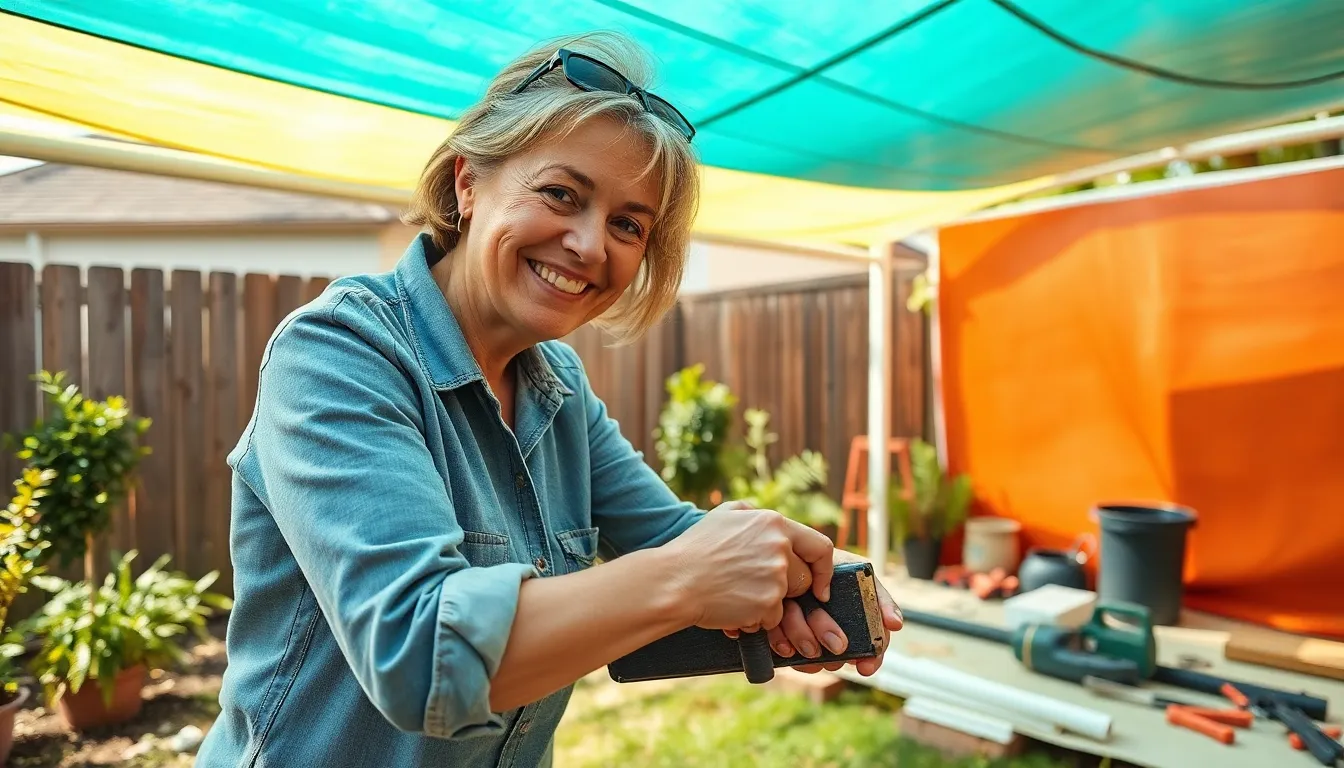
We’ve explored premium enclosure answers, but now let’s jump into affordable DIY options that deliver impressive results without very costly. These cost-effective approaches allow us to create functional patio enclosures using readily available materials and basic construction skills.
PVC Pipe Frame Constructions
PVC pipe frames offer us an incredibly affordable and lightweight foundation for patio enclosures. We can easily cut and assemble these pipes using basic tools, creating custom-sized structures that perfectly fit our patio dimensions. The material resists rust and rot, making it ideal for outdoor applications where durability matters.
Building with PVC pipes allows us to construct frameworks that we can then cover with various materials like clear plastic sheeting, mesh screens, or fabric tarps. This flexibility means we can adapt our enclosure based on seasonal needs or budget constraints. We’ll find that PVC’s lightweight nature makes installation manageable for most DIY enthusiasts.
The cost effectiveness of PVC construction makes it particularly attractive for temporary or semi-permanent enclosures. We can disassemble and relocate these structures as needed, providing versatility that permanent installations can’t match. Most PVC frameworks can be completed in a weekend with minimal experience required.
Tarp and Canvas Coverings
Tarps and heavy-duty canvas provide us with quick, weather-resistant answers for patio covering. We can secure these materials to homemade frames using ropes and hooks, creating instant protection from sun and rain. Canvas offers superior aesthetics and durability compared to standard tarps, though it comes at a slightly higher cost.
Weather protection becomes immediate when we properly install tarp coverings over our frame structures. These materials shield us from harsh UV rays while providing adequate rain protection for most weather conditions. We’ll discover that modern tarps come in various colors and weights, allowing us to match our home’s exterior design.
Shade sails represent a specialized form of tarp covering that creates airy, sculptural elements in our patio space. These triangular or rectangular fabric panels diffuse sunlight effectively while maintaining airflow underneath. We can position multiple shade sails at different heights and angles to create ever-changing visual interest.
Repurposed Material Answers
Bamboo and reed fencing give us natural-looking privacy screens at budget-friendly prices. We can install these materials using simple framing techniques, creating attractive enclosures that blend seamlessly with garden environments. These organic materials provide excellent privacy while allowing some airflow through their natural gaps.
Corrugated polycarbonate roofing panels offer us translucent overhead coverage that protects from rain while maintaining natural light. We can install these panels on basic wooden or metal frameworks, creating bright, conservatory-style spaces. The material’s durability ensures long-term performance with minimal maintenance requirements.
Willow screens provide another repurposed option that adds rustic charm to our patio enclosures. These woven panels install easily against existing structures or new frames, offering privacy with an organic aesthetic. We’ll find that willow screens weather naturally over time, developing an attractive patina that enhances their visual appeal.
Creative repurposing extends to reclaimed wood, old windows, and salvaged materials that we can transform into unique enclosure elements. These materials often cost significantly less than new alternatives while adding character and sustainability to our projects. We can combine different repurposed materials to create eclectic, personalized enclosures that reflect our individual style.
Professional Installation Considerations and Permits

When we’re ready to move beyond DIY answers to professional patio enclosures, proper installation and permitting become critical factors for success. Professional installations require solid attachment to existing structures and typically need permits before work begins.
Local Building Code Requirements
Building codes in our area will dictate exact materials we can use for patio enclosures, along with height restrictions and structural integrity standards. These regulations ensure our enclosure can withstand local weather conditions and meet safety requirements for emergency exits and ventilation systems.
Most codes require proper anchoring methods to prevent wind damage, which is why professional installers must understand climate exact requirements for our region. Compliance with local building codes protects us from costly fines, insurance complications, and expensive rework after installation.
We’ll need to research neighborhood guidelines that might influence design specifics, as some communities have additional restrictions beyond standard building codes. Consulting with local authorities early in the planning process helps us avoid surprises during the approval process.
Contractor Selection Tips
Experience with patio enclosure installations matters more than general contracting skills when we’re selecting our installation team. We should verify that contractors hold proper licenses and insurance coverage to protect ourselves from potential liability issues.
Checking reviews from previous clients gives us insight into workmanship quality and project management capabilities. We’ll want to evaluate each contractor’s knowledge of local building codes and their ability to handle permit applications on our behalf.
Written quotes with detailed timelines allow us to compare providers accurately and understand exactly what services we’re receiving. Warranties or guarantees on installation work provide additional peace of mind for our investment.
Cost Estimation Guidelines
Installation costs vary significantly based on enclosure type, with glass systems typically costing more than screen or vinyl options. Our total budget needs to account for materials, labor rates in our area, permit fees, and any modifications required to existing structures.
| Cost Factor | Typical Range | Notes |
|---|---|---|
| Materials | 40-60% of total | Glass more expensive than screen/vinyl |
| Labor | 30-45% of total | Varies by local rates and complexity |
| Permits | $100-$500 | Depends on local requirements |
| Modifications | 5-15% of total | Structural changes to existing patio |
Professional installation increases upfront costs but ensures code compliance and long term durability compared to DIY approaches. We can reduce expenses by handling site preparation ourselves while leaving technical installation to qualified professionals.
Multiple quotes help us understand fair market pricing and identify contractors who might be significantly over or under market rates. We should be cautious of quotes that seem too low, as they might indicate shortcuts in materials or installation quality.
Conclusion
Transforming your patio into a functional year-round space doesn’t have to be overwhelming. We’ve explored countless options that fit every budget and style preference from elegant glass installations to creative DIY answers.
The key is choosing the right combination of elements that match your exact needs and local climate. Whether you’re seeking complete weather protection or just partial coverage for enhanced comfort your perfect patio enclosure is within reach.
Remember that proper planning and professional guidance can make the difference between a temporary fix and a lasting investment. We encourage you to start with one element and gradually build your ideal outdoor sanctuary.
Your enclosed patio will become the favorite gathering spot for family and friends while adding important value to your home.
Frequently Asked Questions
What are the main benefits of enclosing a patio?
Enclosing a patio transforms your outdoor space into a year-round sanctuary while significantly enhancing your property value. You’ll enjoy protection from weather elements, extended living space, and the ability to use your patio regardless of season. Enclosed patios also provide better pest control and create a more comfortable environment for entertaining guests.
What are the best glass enclosure options for patios?
The top glass enclosure options include tempered glass panels for strength and clarity, sliding glass doors for flexible access and light transmission, and glass roof systems for conservatory-style spaces. Tempered glass panels are ideal for permanent installations, while sliding doors offer versatility. Glass roofs maximize natural light but require proper insulation and ventilation.
How can I add privacy to my patio enclosure?
Popular privacy solutions include bamboo screening systems for eco-friendly durability, lattice panel designs that allow airflow while providing partial privacy, and living green walls with vertical planters. Bamboo screens offer customizable sizing, lattice panels can support climbing plants, and green walls enhance both aesthetics and air quality.
What’s the difference between pergolas and gazebos for patio coverage?
Pergolas provide partial coverage with an airy feel, typically made from cedar or redwood for timeless elegance and minimal maintenance. Gazebos offer comprehensive weather protection with design versatility. Modern metal gazebos are durable and suit various aesthetics, while pop-up versions provide portability for renters or flexible outdoor solutions.
Are retractable systems worth the investment?
Yes, retractable canopy systems maximize patio flexibility by allowing instant transitions between covered and open-air environments. Available in motorized or manual options, they provide customizable sunlight management and weather resistance. Smart home integration and weather sensor automation add convenience, making them excellent long-term investments for versatile outdoor living.
What are affordable DIY patio enclosure options?
Budget-friendly DIY options include PVC pipe frame constructions for lightweight, custom-sized enclosures, tarp and canvas coverings for quick weather protection, and repurposed materials like bamboo fencing or reclaimed wood. These solutions can be covered with clear plastic sheeting or fabric tarps, offering creative and sustainable alternatives to expensive installations.
Do I need permits for patio enclosures?
Most patio enclosures require permits and must comply with local building codes that dictate materials, height restrictions, and structural integrity standards. Consult local authorities early in planning to avoid surprises. Professional contractors experienced with local codes can handle permit applications and ensure compliance, preventing costly mistakes and ensuring safety.
How much does professional patio enclosure installation cost?
Professional installation costs vary based on materials, labor, permits, and necessary modifications. While upfront costs are higher than DIY options, professional installation ensures long-term durability, code compliance, and proper structural integrity. Consider it an investment in your property value and safety, with experienced contractors providing warranties and ongoing support.

